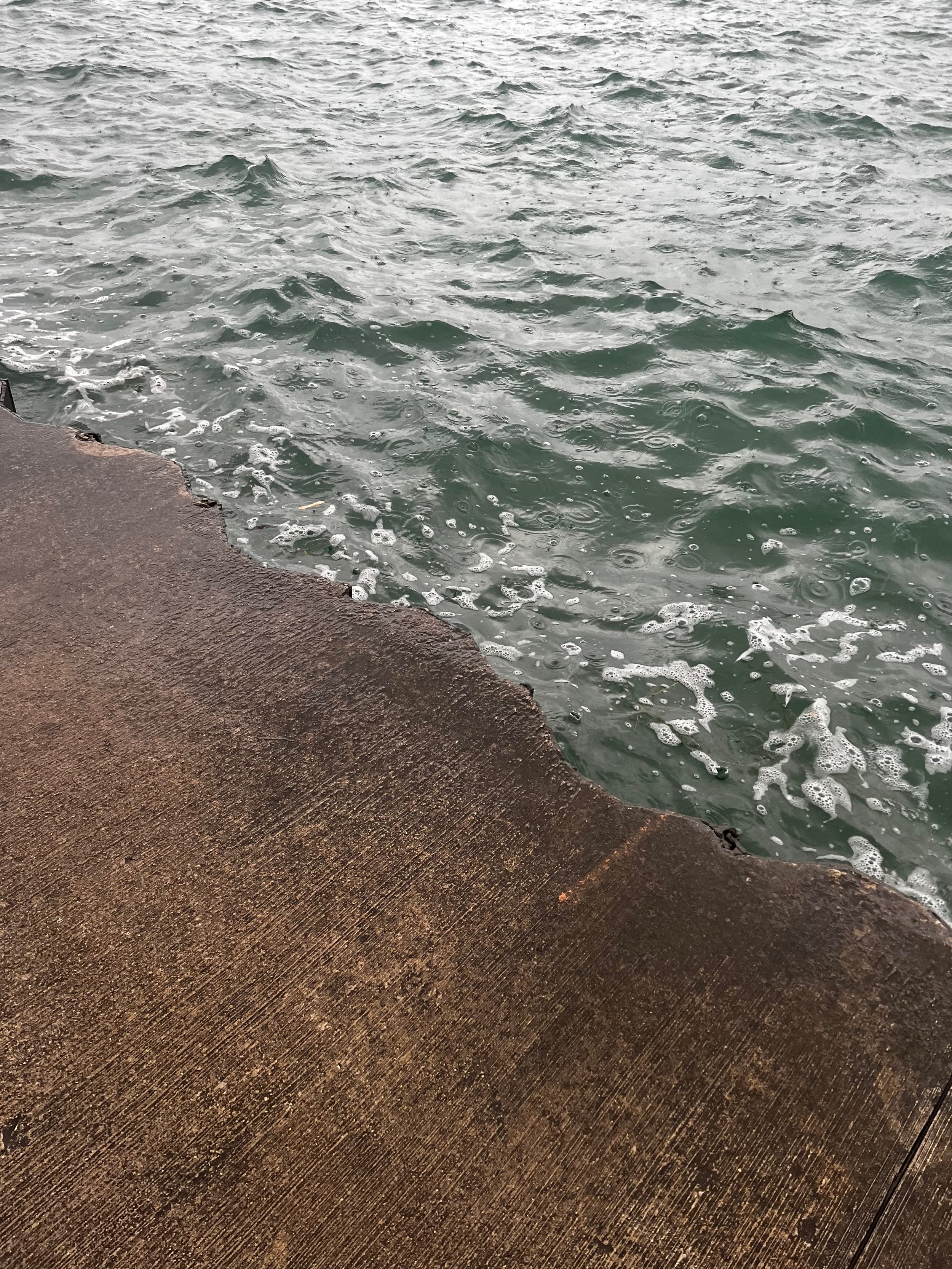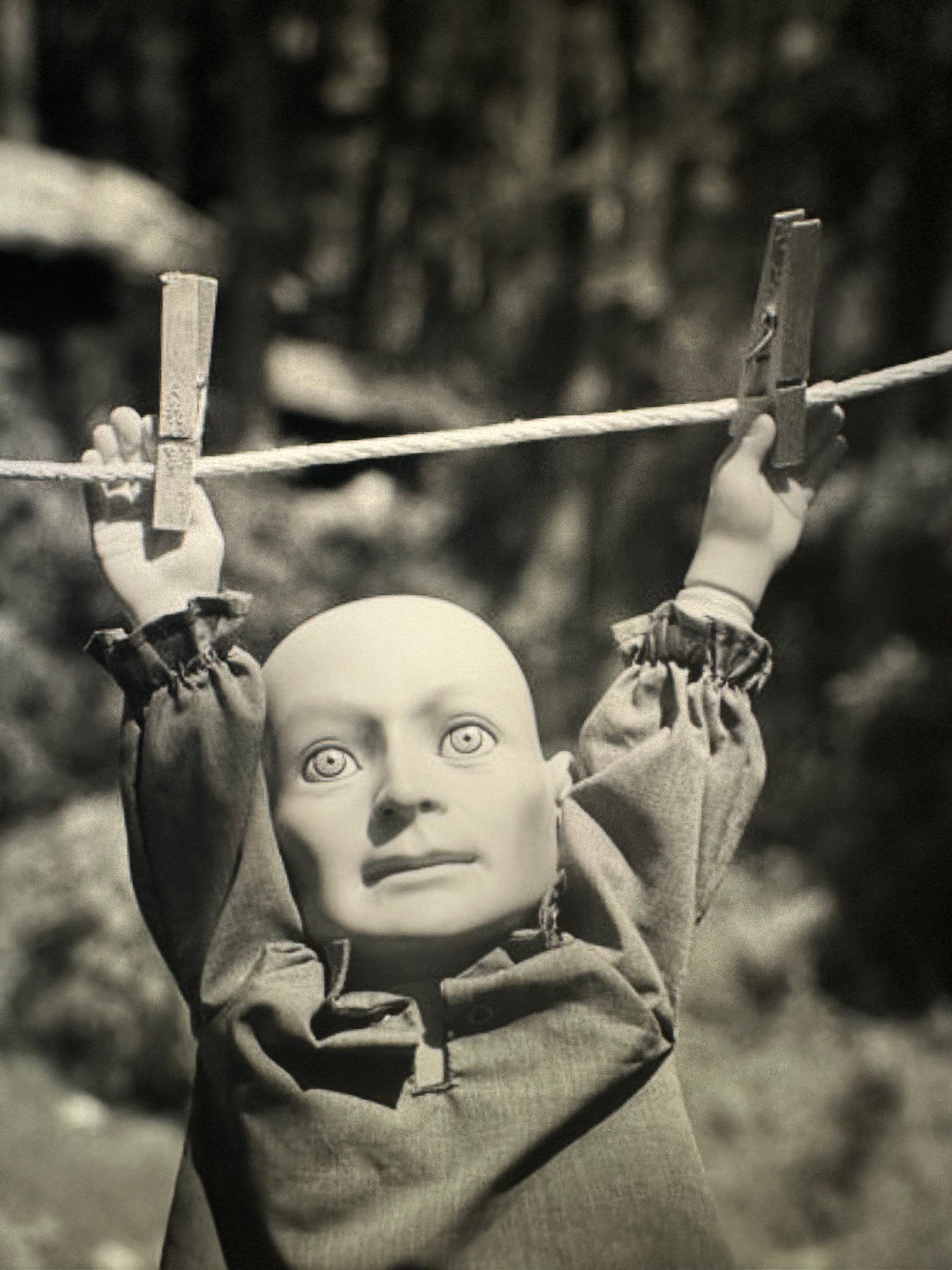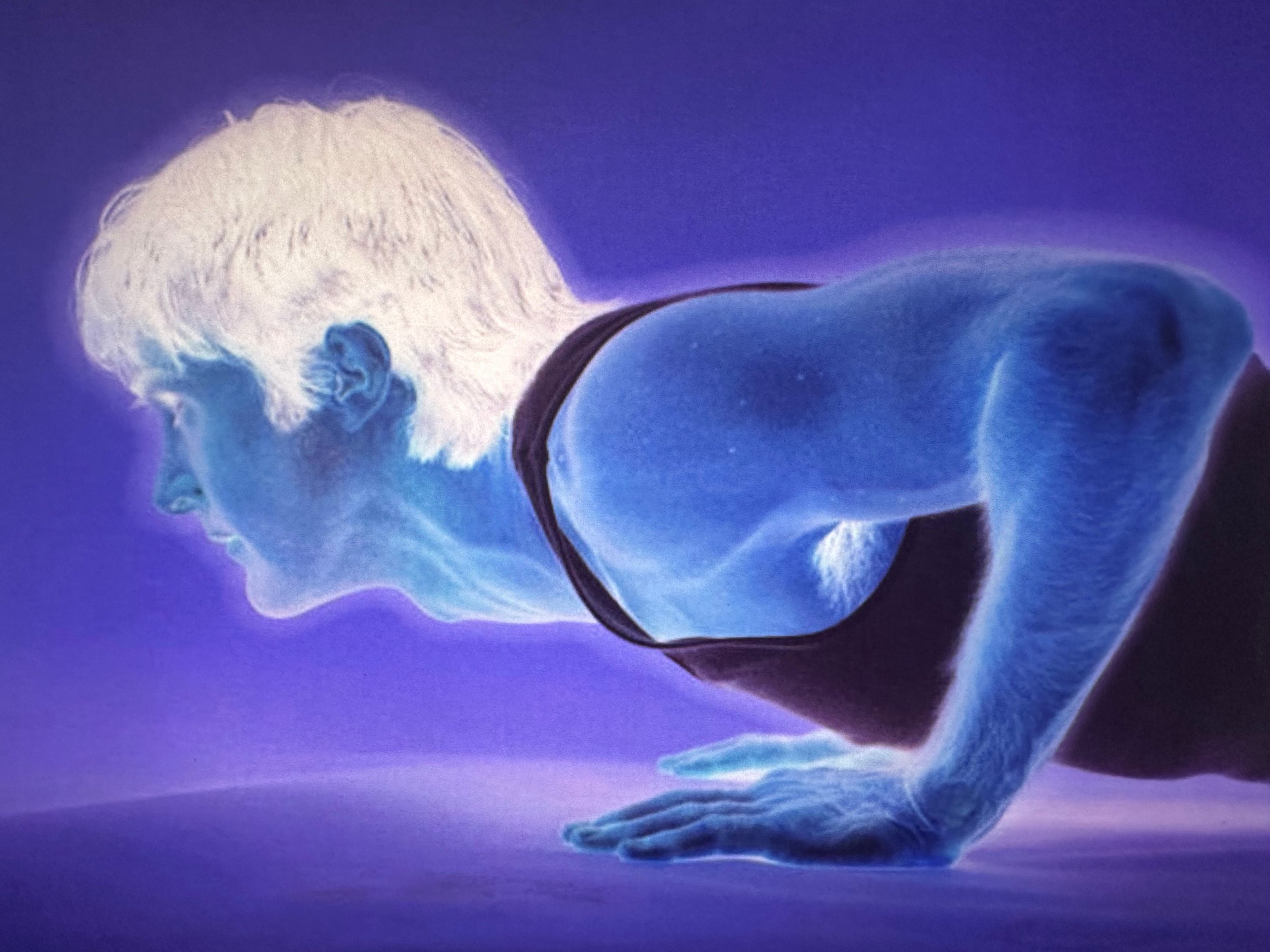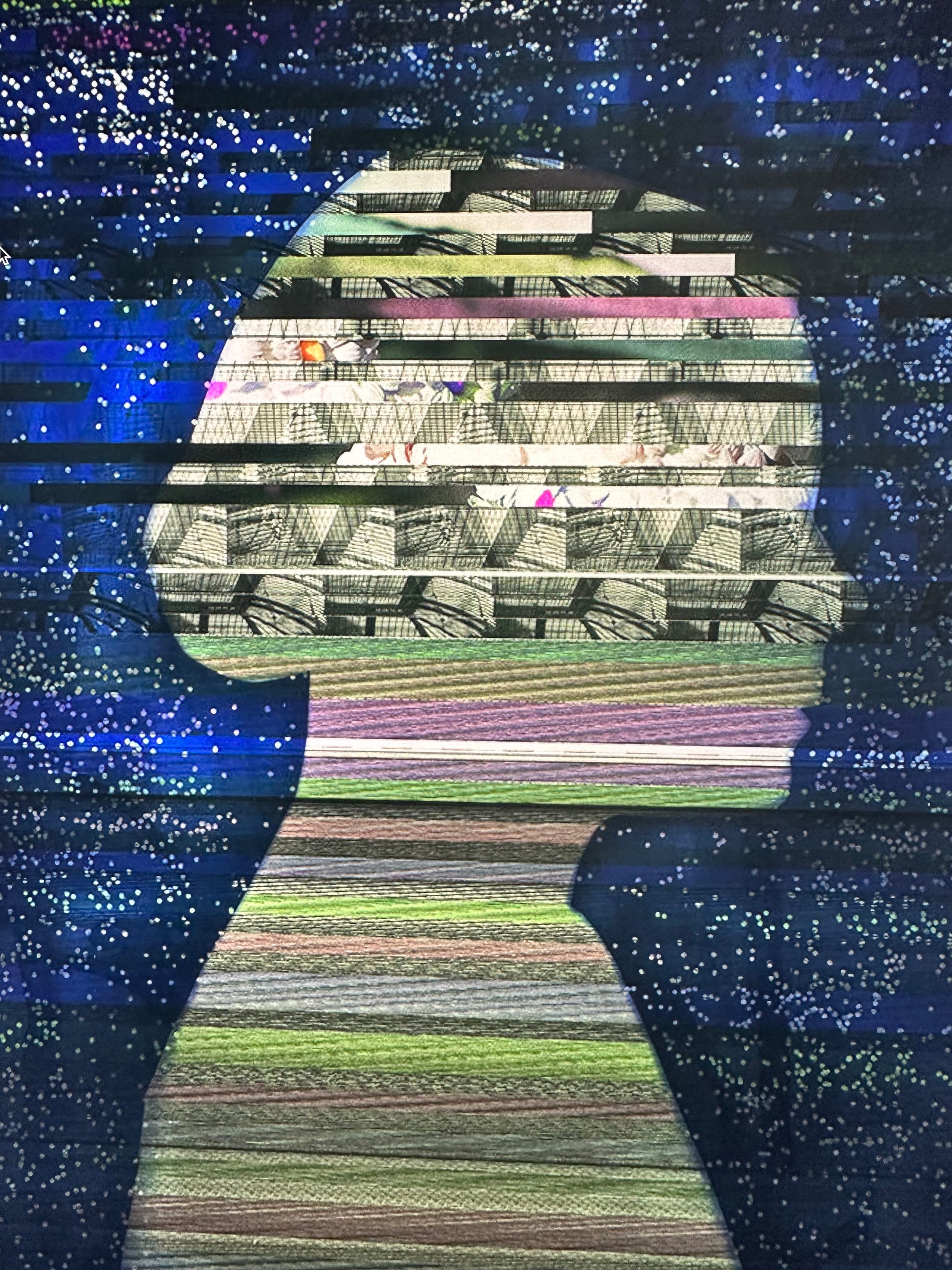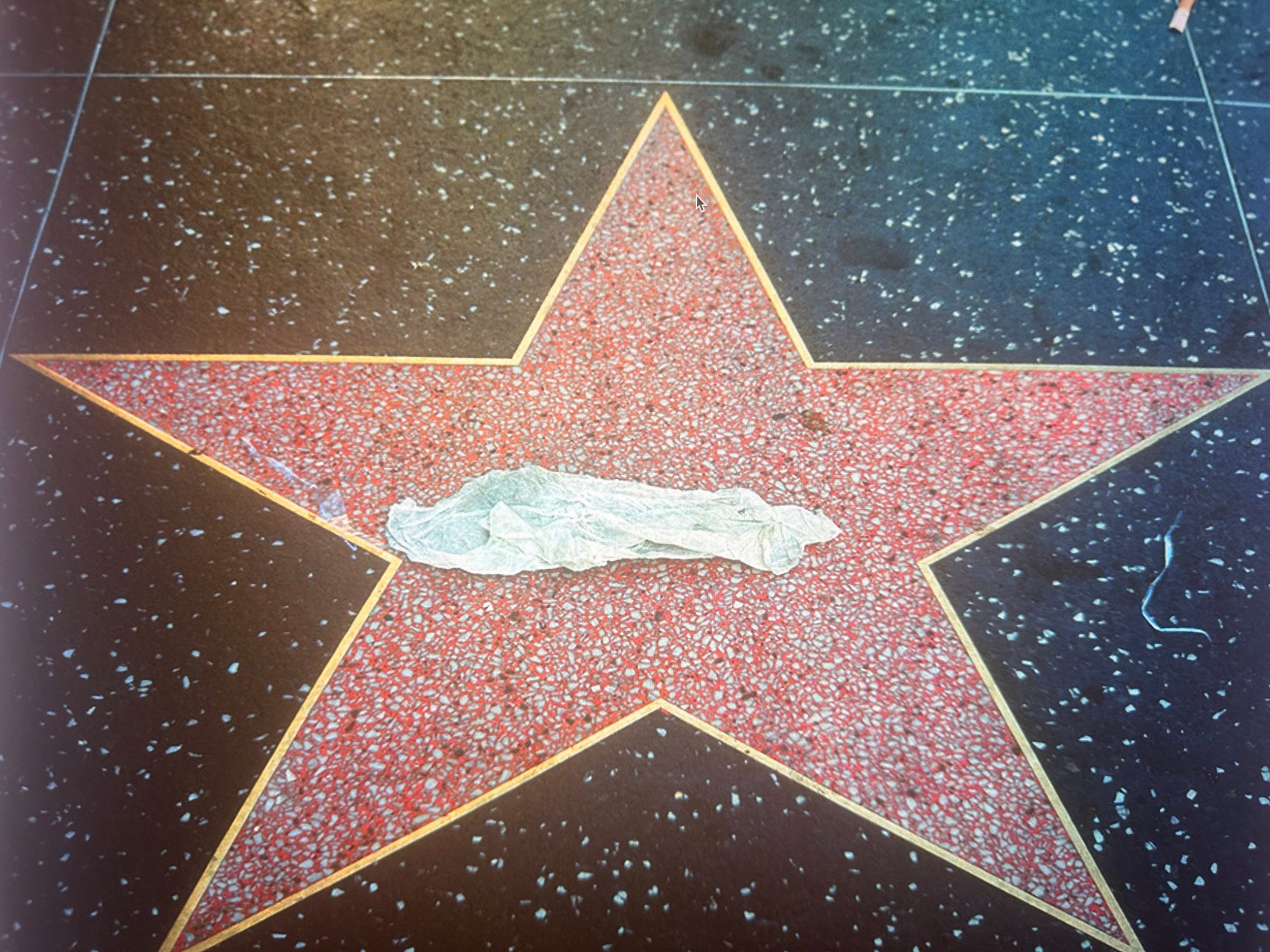On Trust.
Photography by Theo Bosboom
A case can be made that today the most important asset is that of trust.
While a Brand seeks attention its goal is to become a trust mark.
In a world where many institutions and leaders for a variety of reasons have lost trust, earning and winning back trust is key to be able to move forward.
Without trust one grapples with heat and little light.
Trust is speed in that if an individual and an organization has trust they can move much faster.
Trust is unique in that it is earned through a combination of data and emotion.
Photography by Theo Bosboom
Data. Intent Transparency.
To gain trust share the data, show the intent and be transparent about the process.
It is often said that trust is earned over time.
While this is true especially in personal relationships there is a formula to earn and keep trust.
This requires a combination of data, intent, and transparency.
The first step to earning trust is to have valid data which is shared openly with the people with whom earns to gain trust.
The data provides the facts that a perspective is based on. By sharing the data everyone can interrogate it and find any weaknesses.
But data is not enough.
We all know that data can be interpreted in different ways and so it is clear to share ones intent. What are we hoping to achieve? Be clear about goals and hoped outcomes so people are not worrying about a back story or some spurious intent or some bait and switch ruse.
In addition to data and intent one must be transparent about the process and thinking that yielded the recommendation.
Basically the three-step process works as follows:
Data: Here is why we believe.
Intent: Here is what we are hoping to achieve.
Transparency: This is the way we are analyzing, processing and reading the data to achieve our intent.
It is very hard by keeping people in the dark about key metrics to gain their trust. One of the challenges in the Hollywood Strikes is that many companies are hiding how well a show does. They are basically saying trust us but we will not show you our data.
Look where there is a breakdown of trust and one will see hidden data, spurious intentions, and dark processes.
Photography by Theo Bosboom
Trust and Integrity.
Trust and Integrity are seen as associated but different:
Integrity means doing the right thing in the right way; it means adhering to values strongly held.
Trust is a belief that someone is honest and credible; trust is earned by being honest, having a positive intent, having strong competencies, and a track record of results.
To be truly trusted as an individual and often as a firm one needs not just data, intent and transparency but also integrity.
This is where the emotion that makes all the difference between truth and trust lies.
Integrity does not mean consistency.
If there is new news and new data one would be foolish to be consistent.
Integrity does incorporate values, beliefs and purpose which tend to be about the character of an organization and an individual.
Photography by Theo Bosboom
Standards and Accountability.
To be a trusted leader or a firm or a brand one needs not just good data, clear intent, transparent process and integrity but also standards and accountability.
Today too many people blame others when things go wrong. We see duckathons, blameathons, and passing of the buck.
Or declining standards.
To be trusted one should have standards that one can be proud of and are inspirational. If one does not hold others to high standards how can they be trusted?
Today there are lots of reasons to blame the loss of trust from money seeping into politics, social media, a refusal to listen to the other side and much more. All of these maybe true but it is highly unlikely that trust can be gained by stopping these forces.
Rather it is to ask ourselves whether we have good data, clear intent, are transparently open, have integrity and believe in standards and accountability.
And insist on these from our leaders, suppliers, partners and most importantly ourselves.
6 Keys to Successful Interactions.
As people return to the office and work is impacted by the Generative AI revolution our human to human interactions are going to be the key to success. This builds on an earlier post.
Whether in the physical or virtual world we spend a significant amount of time interacting with others.
To a great degree the success of an individual at both a personal or business level, as well as those of leaders, teams and company cultures, are highly co-related with the quality of these interactions.
There are six keys to maximize the impact of any interaction whether with individuals or groups.
Three of them are what we bring to the interaction ( generosity, empathy and attention) and three of them (clarity, belief and energy) are what we want to leave or take from the interaction.
Why interaction versus meeting.
The use of the word interaction versus meeting is purposeful for three reasons:
1. Active versus Passive. One attends meetings while one participates in an interaction.
2. Return to Office mandates are likely to flounder if people return to attend meetings and find themselves sitting around with headphones in common areas hoping that some enlightenment via osmosis occurs by watching others or some magical serendipity transpires because one runs into someone around the mythical water cooler! Hours of travel, a reduction in flexibility and increased expenses to hopefully glimpse these highly advertised experiences will not be a great trade-off. The focus should be on in-person interaction versus office and meetings if RTO is going to work and the true learning, relationship and cultural benefits which are very real and important can be experienced.
3. By focusing on interaction one reduces waste by limiting the number of attendees to only those who benefit from or participate in the interaction and constraining the content to what needs real time synchronous interaction versus something that can be read or dealt with at any time or any place.
What one should bring to an interaction.
There are a lot of books and articles on meeting management and how to get the most out of gatherings.
Most of them are utter and complete BS because they all focus on how you can get the most out of an interaction, while the focus should be how can you give the most in an interaction.
If you go to a meeting with an “extraction” mindset versus a “giving” mindset you are likely face several problems including a) missing meetings where you may have been able to share your knowledge and therefore build goodwill b) become so focused on what you are looking for that you do not discover what you need.
So, you end up with less and less knowledge, find yourself shocked and surprised at things that come from left field and suffer a diminished reputation as a taker versus a giver.
To maximize learning, reputation and enhance interaction experience focus on generosity, empathy and attention as the keys to bring to every interaction.
a) Generosity.
How can one leave the person or the people whom one is meeting with or presenting to with a gift?
A gift of knowledge or insight or a way to see things that they did not have before. Something that makes them believe that it was a good use of their time.
Besides knowledge some other ways to be generous include appreciation of their skills and their contributions. Everyone wants to be acknowledged and recognized for their good work.
Another way to be generous, is to provide guidance. People are hungry for advice, directions and stories to navigate whatever challenge or situation they face. Providing perspectives, stories and experiences resonate and scale in empowering and growing people.
Knowledge. Appreciation. Guidance. These are three ways to bring generosity to an experience.
b) Empathy.
How can one truly understand the other persons perspective and point of view because in doing so one will grow even if we might disagree with their perspective or view.
If you are presenting, how can you make sure that your talk is relevant to those in the room and the issues they have in mind and not some boiler plate boiled anew. Is it not ironic when speakers talk of relevance and customization and customer or content is king but do not customize or make relevant their content to their audience? Basically, they are saying that their time is more valuable than those attending.
Three ways to ensure empathy is to seek to understand by asking, listening, and re-stating the problem and situation. By reframing the problem using analogies and other categories and finally by sharing relevant personal experiences.
Understanding signals, you are listening. Re-framing telegraphs that the problem or challenge being faced has been shared by others. Personal experiences ensure a human connection and re-enforces that you have been in this person’s shoes or seen others who have been.
c) Attention.
When we have a great interaction, we feel that the person talking to us is paying attention to us.
They do not appear distracted looking away at some screen or signal they are participating grudgingly in the interaction. They are there in body and spirit.
People watch for tone of voice, facial expressions, and small gestures rather than one’s physical presence if one is paying attention paying attention.
Bringing oneself, one’s generosity and ones empathy are key inputs for a great interaction.
But an interaction is as much about what you and others take-away. Outcomes are key and the it is important to leave people with clarity, belief, and energy.
d) Clarity.
In a great interaction or meeting people come out with a clearer understanding of a situation, with greater precision of knowledge, and clear-cut next steps than before the meeting or interaction.
Doubts are cleared. Any mixed signals clarified. Hedges eliminated.
Everybody is clear as to what they need to do next and who is doing what.
One leaves the interaction better informed and equipped to tackle whatever the challenge or problem might be.
Now think of the meetings one has when people come out more confused, more unsure of what to do. We have all attended these group gropes or even individual one on one meetings which were thick with dense mumbo-jumbo, buzz-word bingo, oozy obfuscation and mixed signals that left us more mystified and doubtful than before we had the interaction.
One way of ensuring clarity is to speak simply using plain language and have people play back what the next steps are.
e) Belief.
It is one thing to be clear as to what must be done next but as important is to leave an interaction with a greater belief in your or your team’s ability to do what is necessary.
Many managers collapse the mood of a room by berating an individual or team’s performance without some offsetting knowledge or guidance on how they can do things better or improve themselves.
A great interaction occurs when one leaves a meeting feeling more confident about one’s capabilities in tackling what must be done. Even if one had received feedback in a meeting about not having done a good job it is key to leave with guidance and a sense of motivation that one can fix the situation and finding a remedy.
A dirge like procession of individuals with hang-dog faces, droopy shoulders and shuffling feet is not just a downer but a negative vibe that echoes through everybody who interacts with the individuals whose self-belief was drained out of them.
A key is to leave someone feeling better about themselves after you meet them rather than worse even if you provide them with less than positive information by showing how you or another individual tackled the same problem, reminding them of the times they recovered when they were knocked back by a challenge or sharing your individual stories of tackling similar situations.
f) Energy.
We are living in a time of great change, accelerating velocity of business and multiple pressures.
This is leaving people often drained, burnt out and wanting to just curl up under a blanket from the noise and tension.
Great interactions leave people rejuvenated, replenished, and refreshed.
While clarity is about the mind, belief about the heart, energy is about the body.
Bringing energy to a meeting can boost others. Energy is contagious. Other ways to leave people more energized can involve leveraging humor, providing the opportunity to take a break, or bringing empathy and understanding on the forces that drain energy with some ideas of fixing them that can leave people with a boost.
Regardless of whether one interacts in person or remotely, individually or in groups, how senior or junior one is the likelihood of having a great meeting or interaction is likely to improve if one focusses on leaving everybody you interact with clarity, belief, and energy.
Rejuvenating & Re-Imagining Organizations.
Photography by Steven Friedman
For decades the fundamental beliefs of most organizational design were built on five assumptions:
The Organization gives structure and directs work.
Tenure and experience are critical to advancement.
Most of the work is done inside an organization.
Fairness requires a common set of rules and ways of working to be applied to all.
Most employees are full time employees of the company.
These are now being supplemented and in some cases being replaced by the exact opposite realities and dawning realizations:
The Organization enables talent to create structure and direct work. Talent does not work for the organization, but the organization works for talent.
Expertise in a changing world and constant learning rather than tenure/experience are key.
Most of the work is done outside an organization by suppliers and marketplaces to access talent when one needs it and to remain agile and cost-effective in a transforming world.
Fairness means customizing programs for each talent to which everyone has equal access.
Most staff are either contract workers, free-lancers, or fractionalized employees.
Photography by Steven Friedman
Organizations are now beginning to twist and transform into new shapes recognizing the realities of the world that is and will be versus the world that was or one may wish to go back to:
a) Need to be designed from outside in versus inside out: Companies need to be designed to be driven by marketplace realities about new competitors, transformational technologies and changing talent mindsets rather than historical category definitions, a companies historical moats, or the way management got to be management.
b) Companies will have many models versus one model of working: Models will defer based on country, competition for talent and focus on current business or new innovations. A company with one way or one model is unlikely to have the multiple foci necessary for a shape shifting world.
c) The focus should be on outcomes and goals versus process and control: Three key outcomes for any company are financial results, client satisfaction and talent attraction and retention. These three outcomes and goals should be what organizations should be optimized for.
This requires a significant shift in the mindset of management where they need to be willing to trust talent and teams who are doing the work to best decide how to drive the outcomes of financial results, client satisfaction and talent attraction and retention.
As a result the emphasis should be on:
Bottom Up versus Top Down: Talent will be asked to take the initiative and to drive the answers and management will guide and coach.
Frontlines Vs HQ: Teams working in different markets on different clients need to be empowered to solve the problem in ways that fit their markets versus some mandate from people far away from the competitive battlefield.
Freedom within a Framework: Besides a focus on outcomes Management needs to provide some frameworks and guard rails to ensure IP ownership, alignment with legal and other guidelines and some criteria where a quick sign-off may be needed from Management.
Every management team should ask if their organization is biased towards yesterday or tomorrow and if they are designing their companies to deliver on the mantras, they claim such as agility, personalization, trust and being future forward.
Agility: If being agile is important than companies need to be able to shape shift and move quickly. If this is true is the organization flexible on how and where work is done and how partnerships are initiated.
Personalized: Can an organization truly deliver customized products and personalized services if this is not built into the organizational structure. If there is one mandate, one way and one process how do people have the flexibility they need.
Trust: Can an organization engender trust with Clients and customers if they do not trust and empower their teams?
Future Forward: In a world of rapid technological change, new demographics, changing mindsets, new ways of working and marketplaces the proof of being future forward will be identified in organizational design.
Chance.
Whenever anyone asks me for career advice, regardless of their age or industry or challenge, I ask them to read a piece I wrote a couple of years ago called 12 Career Lessons (it is second most popular post in over three years of writing this thought letter after Re-Thinking Presentations)
12 Career Lessons distills everything I have learned after a 40 year career. Many then ask and want to hear the story behind these lessons.
10 years ago the Chicago Ad Federation gave me their highest honor which is like a life time achievement award and my acceptance speech called “Chances” is what I share with those who want to understand the messiness but most importantly the help and luck one needs in any career. I have republished below for those interested:
In every life, and a career is just a part of life, chance plays a very big role. Luck matters. Some believe things are destined and “it is written” while others like TE Lawrence in Lawrence of Arabia believes “nothing is written.” But regardless luck and chance play a big role in life.
It is not this chance that I would like to speak about but rather about the chances that people took and the chances people have given me over the years without which I would not be here.
Let me start in the middle or at the beginning of my US life where the Graduate School of Business at The University of Chicago (now the Booth School) gave me a chance to be part of a world class university by admitting me with no work experience and an okay GMAT score. I was only one of two people from India admitted that year, 1980, and one of a handful from outside the United States. ( 49% of the students in the Class of 2025 at Booth were born outside the United States!)
When I graduated with great grades only one of 35 companies, I interviewed with called me back for another round. I did not have a work visa. I was from India. I looked and spoke like an Indian. A gentleman called Mike Kearns was interviewing for a company called Leo Burnett and because one of his friends in the agency, Sadru Patel, was an Indian he decided to overlook the lack of a work visa and call me back for a second round. But before the round Sadru and him prepared me to ensure that I had the best chance to get in. I interviewed with legends like Dick Hobbs (who was one of the driving forces behind the Leo Burnett Media department and who would help birth Starcom) and many others, all of whom voted to give me the chance to get a job. Without the chance that Leo Burnett and all those folks gave me, I would have graduated jobless and possibly returned to India.
In those days even if you were going to join the Client Services Department you would start in media and before you were “placed” on an account you sat in a large room called “The Pit.” It was a big conference room which had a series of desks and one phone which Tony Weisman who had joined the same day and is now the CEO of Digitas in North America sat next to and barked out the names when the phone rang for one of us in “The Pit” to go do some thankless adding of numbers or spreadsheets (this being real spreadsheets since there were no computers). My main job in “The Pit” was to work with the head of media research called Jayne Zenaty who showed me how to build the case for an emerging new technology called “cable television.” That chance to see how you built a case for something that still was in its infancy turned out to be very helpful some decades later.
When I was finally placed on an account (Maytag and Allstate) I was fortunate to work with Don Amos who took a chance by taking me into his office and letting me know that I “did not fit”. What he meant was that while I was good at running the numbers and doing the buys, I could not speak about sports or culture or make others feel that “I fit.” Today this advice might be considered inappropriate but Don did not just provide advice but took it upon himself to send me to college football games with his children, get me into the University Club and pick up all the social graces, cultural cues and nuances that mattered (and still matter) in corporate America. Don Amos took and gave me chances.
When I moved into Client Service on Procter and Gamble, my first boss Patricia Swindle who is here decided I had no writing skills and as far as I was concerned, she became the Devil incarnate in that she would make me re-do memos at least 20 times (this was in the age of typewriters) until every word, every sentence and every selling point was as tight as possible. She gave me the chance to improve my writing skills. Others like Paula McLeod, Mary Bishop and Peter Husting threw me meaty and strange assignments that included observing and analyzing rat studies to build a case for an anti-plaque toothpaste. When going through these rat studies with corporate lawyers like Carla Michelotti who is also here, I wondered where I was and what I was doing. When would I work on a prestigious account and do glamorous things?
As luck would have it my next assignment involved trash bags. Glad trash bags. I moved onto this account owned by Union Carbide two days after the Bhopal Gas disaster to go work for a client who was from the deep South and yelled at my account director with me in the room as to what he was thinking putting me on the account. Bill Haljun who was my director just said I needed to work under hostile conditions and hostile clients and here was my chance. He was a religious man and then said we should pray things would work out. His prayers worked and when I left the business two and half years later some long lasting achievements were (along with Warren Guthrie) renaming the company to First Brands, developing the first data driven way of allocating spot television spending to market results and learning how to make amazing ads with Kent Middleton who today is the longest serving creative still at Leo Burnett and who is also here in the room. I also was terrorized by an Account Supervisor named Mike Miller who was convinced that I was the worst presenter he had ever seen and so decided that I needed to rehearse and rehearse and present and present till I knew what I was doing. He did not say you will not present because you are no good but rather you will present till you become good. All these folks took and gave me chances.
I am not a fan of cats and dogs. So after rat studies and trash bags the Leo Burnett company decided I was to work on pet food and specifically on a brand, Amore, where the client did not believe in television advertising but wanted to explore this strange terrible second class thing called direct marketing. My bosses Jeff Herscovitz and others insisted that I learn this direct marketing thing the Client was interested in. So mailing lists, de-duping, postage costs, databases were encountered rather than Hollywood TV shoots or working on McDonalds or United Airlines or Kellogg’s…But that would surely come when I became an account director….
It was time to be promoted but there were no positions since all the large accounts promoted from within. So, Tom Collinger who ran the direct marketing department gave me the chance to be a director in his group though I really was not a direct expert. In some ways it was also seen by many as career suicide since the 34th floor was full of outsiders like Jerry Reitman and Tom Collinger spouting things about integrated marketing and data bases. I joined the “leper colony” and started to learn about these “dark second class” arts. Also got interested in a thing called CompuServe and Prodigy because the economics of direct marketing had a bunch of fixed costs like paper and postage which needed to be offset to make the economics work.
One day driving to a client to present a direct marketing plan with Linda Wolf who would become the CEO of Leo Burnett but was then running the Fruit of the Loom account and was the head of new business I spoke about computers and technology. She asked me to go see Rick Fizdale then the Chief Creative Officer who was determining how to staff a new business pitch for IBM’s Personal Computer Business. The assignment was not a creative pitch but a 90-minute conversation about the future of computing and what we would recommend IBM market its PC. Rick gave me the chance to lead this pitch and I was armed with the very first IBM ThinkPads, went off to Forrester conferences and got to work with legends like Bud Watts (creator among other things of the Rhapsody in Blue themed ads for United which we still hear today). We lost the pitch even though we had got the recommendation right (which was about empowerment and suggested that IBM stop thinking in silos and instead of giving us their PC business to put all their business together), they first hired an unknown agency for a few weeks and did just what we recommended with Ogilvy and Mather who had worked closely with IBM leadership at Amex where they all had come from.
In order to work on the IBM, pitch I had left my direct marketing job and so I was now without an account and a new business loss. Bill Lynch and Rick Fizdale who held the titles of Chairman, CEO and Chief Creative Officer between them asked what I would like to do, and I asked if I could start an Interactive Marketing Group. They were not sure what I was talking about, but they said yes you can do so but you will have no staff. So, I started the group with no staff, no account, no budget in a business where stature meant how many clients and budgets and people you controlled.
Jan Klug who was running a part of the McDonalds account called me and gave me the chance to pitch her Client about Leo Interactive to help them evaluate the Time Warner Full-Service Test in Orlando in 1994. McDonalds hired us and we needed people to help us with content for this test and I was introduced to two young brothers, Adam and Eric Heneghan from Iowa who had moved to Chicago with a company called Giant Step Productions. We asked them to work from the Leo Burnett building. We then found ourselves recommending McDonalds to get out of the Time Warner test telling them that it was not going to work. The Client wondered if we were mad since we were asking our only Client not to do the only project that we were working on. We asked that they think about a company called America Online instead and a CD-ROM company called Broderbund to partner with.
In rapid order Carla Michelotti’s husband Bob Colvin then a senior agent at the talent agency ICM, introduced us to Broderbund and helped introduce us to folks that allowed us to create the first online live talk show called Oldsmobile Celebrity Circle on America Online. Bob and ICM took a chance on a crazy Indian guy spouting interactive marketing, a bearded savant called Tig Tillinghast and two strange looking Iowan folks which were the Leo Interactive Marketing Group.
Then came a flurry of gambles and chances that people took. Adam and Eric agreed to sell most of their company to Leo Burnett. Bill Lynch, Jim Jenness and Rick Fizdale allowed us to take Leo’s name off the door and make Giant Step the Leo Interactive Marketing Group and they let us leave the building into a loft in Greek town and fund things called a server room! And from this loft Clients like United let us launch them on the web and General Motors partnered with then sites like Hot Wired. And the person who helped us build the underpinnings financially was Frank Voris who later would be a driving force with Jack Klues behind another new entity called VivaKi…
3 years and 100 employees strong Adam and Eric taught me how to be an entrepreneur, how to make payroll and a lot of other things but we came to disagree with each other since I remained loyal to Leo Burnett (whose employee I was, and which owned 75% of the company) while they cared about Giant Step and its future. I returned to Leo Burnett sitting in a room stinking of fish above Catch 35, a restaurant, with nothing to do.
And then the phone rang and gentleman I know well said…” Hi this is Jack Klues. I am about to launch Starcom. Can I convince you to join me to help us on digital and the future?”. And thus, was born Starcom IP. But I was not the first employee of Starcom IP. Rather an ex Starcom employee, Tim Harris, had been hired back from a company called Launch Media ( a CD-ROM music magazine run by David Goldberg now CEO of Survey Monkey and husband of Sheryl Sandberg) to help Starcom in digital. Tim Harris was pissed I was there but decided to give me a chance to be the President of Starcom IP (he was Vice President and the only other employee). And with completely made-up credentials we got Miller Beer to take a chance on us. As we grew, we hired folks in a most unusual way. The first hire was someone we thought was an online porn specialist called Steven Governale (he was not), the next was a pal of Tim called Jeff Marshall. Every one we hired had to be approved by everyone else and we took chances on the most unusual and most strange folks who left successful careers to take a chance on us. PJ Macgregor , Wendy Barsky (now MacGregor), Sarah Cook, Andrew Swinand, Dan Buczaczer, Scott Witt, Chandra Panley, Christian Kugel, Courtney Acuff, Michael Zeman….the list goes on and on. Today these folks are among the superstars of the industry, and they were great then too and took a chance with us. My claim to fame was that I ran the land of misfit toys, crazy dreamers, strange talkers and very skewed thinkers.
And the chances and people taking chances grew as we become SMG and got people to give us chances to launch the first gaming agencies (Play), social expertise (Reverb), mobile expertise (Digits), futures think tank (SMG Next) and then came Publicis Groupe Media. And during a PGM board meeting we built a case for the future that the only way to win big in digital was to buy a company called Digitas or one called AQuantive which had a unit called Razorfish. While we went about doing that, we were given the chance to launch a unit called Denuo which a gentleman called David Kenny (CEO of Digitas) called to understand better.
Soon Digitas came into the fold, and we launched VivaKi which included Vivaki Nerve Center with Curt Hecht at the helm and in time included Performics and Razorfish and much more.
The chances continued when eight months ago I got a call from Maurice Levy, the Chairman and CEO of Publicis Groupe when I was traveling for work in China and was asked to Chair DigitasLbi and Razorfish. When I asked why he noted I was “acceptable” to the Pete Stein, Shannon Denton, Luke Taylor and Tony Weisman and the other CEOs of the company. They gave me a chance to work with some of the smartest folks and best transformation marketing and technology agencies in the space.
So here I am because of chances I have been given and people who have taken chances on me.
A benefit of success is the ability to give chances to people and taking chances on people.
Because the best thing you can do when given chances is to give other people chances…
Post Script: 10 years after this talk I am still connected to the Publicis Groupe as a Senior Advisor, ending my full-time employment after 37 years in June 2019. During the last few years of my Publicis career I was their Global Chief Strategist and Chief Growth Officer and on the Directoire+. I now work as a company of one focused on writing (one best selling book published, another near completion, plus this Substack), speaking, running work shops on a range of topics including how to upgrade ones mental operating system and how to lead today as well as advising some of the most amazing companies and leaders around the world on talent, change management and remaining relevant in transformational times. Still being given chances after all these years…
On Wealth.
Photography by Aline Smithson
Over time many come to realize that there are many dimensions to wealth.
Often much is written about financial wealth which is clearly important, but there are at least five other types of wealth and to be “wealthy” one needs many of these different wealths which are often intertwined with each other.
The 6 factors to Wealth are 1) Physical 2) Emotional 3) Mental 4) Reputation 5) Financial and 6) Spiritual.
Photography by Aline Smithson
Physical Wealth.
It is often stated that “health is wealth” and it is when we fall ill or are injured that this adage resonates.
If time is all we have than health is a key to ensuring the quality and the quantity of that time.
Everything else being equal (which it rarely is due to everything from genetics and the luck of the draw as to where and to whom one was born) everyone can maximize good health through enough sleep, some exercise, moderate eating and getting checked periodically and then following the advice of doctors trained in modern science.
Photography by Aline Smithson
Emotional Wealth.
Most long term studies have tended to co-relate happiness and contentment with human relationships and a sense of belonging.
At the time of this writing the richest person in the world clearly does not have “a failure to launch” but appears to have “a failure to connect” and amidst all the fame and fortune seems deeply impoverished on what makes one human.
A sense of empathy, erring in the direction of kindness and an ability to laugh at oneself often helps one connect.
Exposing oneself to different cultures, experiences and perspectives also enhances and builds emotional wealth.
Photography by Aline Smithson
Mental Wealth.
Mental Wealth is a combination of many complex factors including mental wellness and cognitive ability. The ability to think on ones feet. Learn and understand. Continuously upgrade oneself is a form of wealth in a changing world and the good fortune of a healthy mind is as important as a healthy body.
Allocating an hour day to hone one’s mental faculties though learning is a way to stretch and connect dots in new ways. Sometimes mental acuity can be enhanced by pharmaceuticals or alcoholic libations among other things.
Photography by Aline Smithson
Reputational Wealth.
In a connected and fast changing world many opportunities arrive due to positive word of mouth, a well established brand and a network of compatriots and colleagues. Reputation matters in a world where leadership is increasingly about the zone of influence versus the zone of control.
Reputation and reality eventually align.
While one can use social media and PR firms to architect, hone and sculpt a reputation sooner or later who and what you are comes to align with who and what people believe you are.
The three keys to reputation are 1) a constant quest for excellence because if one wants to be known as world class one has to try to be world class, 2) an ability to be open to constant feedback which is used to iterate and improve and 3) generosity and giving back and helping people particularly those who cannot help you.
Photography by Aline Smithson
Financial Wealth.
Money matters and most ( but not all ) people who say it does not matter either have too much of it or are actually besotted by money.
The key with money is that it allows people to acquire food and shelter at minimum and think of things besides money once the most urgent needs are taken care.
Self esteem and happiness are often (but not always) tend to be co-related with financial wealth because it allows one to buy better mental and physical health, is aligned with reputation in some ways and most importantly allows the freedom to spend one’s time in the ways that gives one joy.
Interestingly, if one builds physical, emotional, mental and reputational wealth one often finds well positioned for financial wealth as result of these other assets.
The challenge for most people is to resist the force field of some cultures that emit a message that a “net worth “is the same “life worth”, which tends to make one steer by only the financial star and end up in places one never meant to be by following its siren call.
The most difficult part of dealing with financial wealth is being able to say “enough” and follow unexciting habits of saving, diversifying and planning for the long run.
Photography by Aline Smithson
Spiritual Wealth.
A form of transcendental wealth that is disconnected with the physical and the scientific is spiritual wealth.
Some find it in religion, others in nature and yet others in something else bigger than themselves that seem to stand outside of time and space as we know it.
Clearly all these forms of wealth are important and connected and often it is hard to have the balance sheet in each area to be only filled with assets and no liabilities.
What is true is that an ideal is to ensure one has ones health, feels connected via relationships, be well regarded, be able to think and feel deeply and have enough money to spend time in ways that gives one joy, while also recognizing that in the grand scheme of things we are both the center of our world and absolutely nothing in the context of the greater world.





